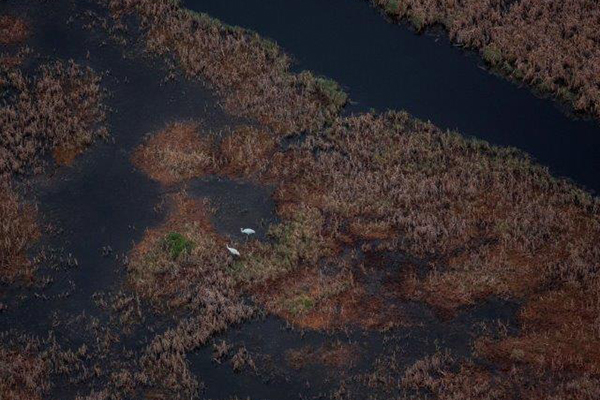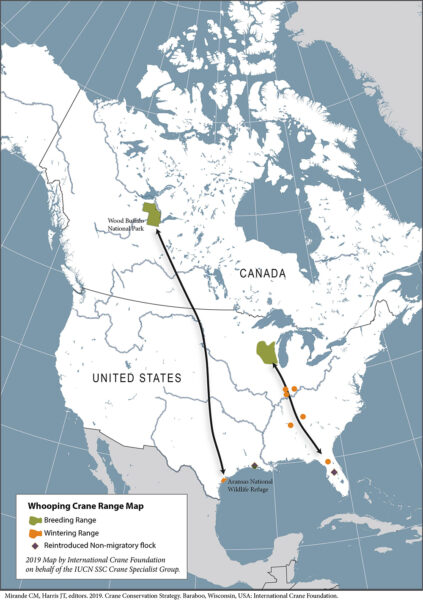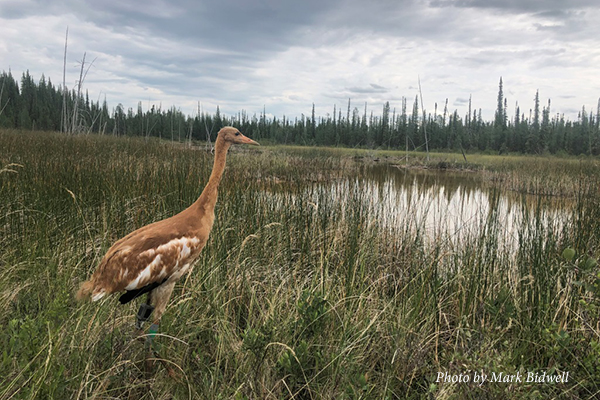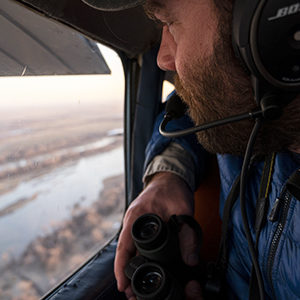
According to the most recent estimates from Environment and Climate Change, Canada, this year’s wildfires in the Northwest Territories of Canada have impacted nearly 3 million hectares – an area greater than three times the size of Yellowstone National Park in Wyoming.

Many of these fires have been in and around Wood Buffalo National Park, where the last remnant Whooping Crane population of about 540 individuals breeds. The fires have prompted the evacuation of Fort Smith, where the park headquarters is located. The Wood Buffalo Complex fire alone is >453,000 hectares and “is classified as out of control” and expanding. Fortunately, core Whooping Crane breeding areas have largely been spared thus far, but fires have been expanding into the Nyarling River, Lobstick Creek, Seton Creen and Salt Plains breeding areas.
Fortunately, Whooping Cranes breed in the wettest and least fire-prone areas of the park. Their breeding sites tend to be concentrated along drainages that hold water for a longer period of the year. In addition, these breeding sites are mostly scattered throughout the northeastern portion of the park, whereas the fires are currently concentrated in the central part of the park.
To date, the direct effects of wildfires on the cranes’ survival are likely pretty limited. However, our Parks Canada and Canadian Wildlife Service colleagues, who best understand the local situation, are generally experiencing direct threats to their well-being and homes (nearly 70 percent of the local population has received evacuation orders). As a result, the on-the-ground assessment of these extremely hot and dry climatic conditions on the Whooping Crane population remains incomplete.
It does appear that the wetland basins have dried up in some portions of the Whooping Crane breeding range this year. As a result, experts suggest there may have been more movement by Whooping Crane families to find ample food and water this year. Dry conditions can limit food resources and potentially expose young to increased predation risk as movement through wetlands also becomes easier for predators.

Additionally, there remains some direct risk to Whooping Cranes if fires continue to expand in size, which is possible in the coming 2 to 3 weeks. Chicks that hatched in early to mid-June are just fledging and may have more limited ability to evade wildfire than adults. However, they should begin to fly shortly if they have not already.
Our thoughts are with communities in the Northwest Territories being impacted by wildfire. We will continue to provide updates on the situation as new information becomes available. We appreciate your patience and support for our Canadian colleagues and the Whooping Cranes.

Story by Andy Caven, Vice President, North America Programs, International Crane Foundation
